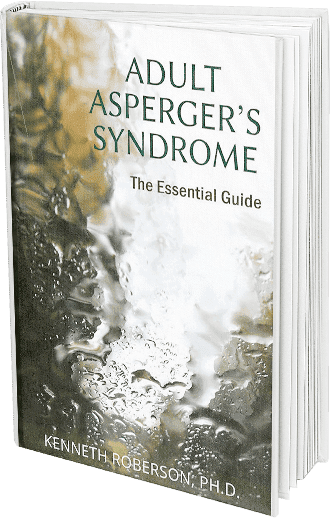
The holiday season, with its festive lights and social engagements, can bring a mix of excitement and challenges for adults with autism. As a psychologist specializing in neurodiversity, I recognize the unique needs and sensitivities that may arise during this time. In this guide, I provide six comprehensive tips to help adults with autism not only navigate but also enjoy the holidays with a sense of empowerment and well-being.
1. Embrace Predictability: The Power of Planning
For many adults with autism, predictability is not merely a preference but a fundamental need. The holiday season, often characterized by spontaneity and unexpected events, can be overwhelming. Planning becomes a cornerstone for a smoother experience.
Practical Steps:
a. Create a Detailed Schedule:
Begin by crafting a comprehensive schedule that outlines all holiday events, social gatherings, and personal downtime. Use visual aids, such as calendars or planning apps, to enhance understanding.
b. Color-Code Activities:
Differentiate between events using color-coded categories. For instance, green for personal time, red for social gatherings, and blue for family activities. This visual distinction aids in processing information.
c. Prepare for Transitions:
Recognize that transitions between activities can be challenging. Allow for transition time in your schedule, indicating a gradual shift from one activity to another.
d. Communicate the Plan:
Share your schedule with family and friends. Transparent communication about your plans not only manages expectations but also invites collaboration and support from loved ones.
2. Establish and Communicate Clear Boundaries: Navigating Social Interactions
Social interactions during the holidays can be intricate, and setting clear boundaries is crucial to managing stress effectively.
Practical Steps:
a. Identify Your Comfort Zones:
Reflect on past experiences to identify social situations that are more comfortable for you. Knowing your comfort zones helps in establishing effective boundaries.
b. Communicate Openly:
Engage in open communication with family and friends about your needs. Whether it’s the need for breaks, quiet time, or limited social engagements, express your boundaries clearly.
c. Use Visual Cues:
Employ visual cues to signal your current comfort level. For example, a colored wristband or a small card indicating your preference for socializing or needing a break.
d. Establish a Safe Word:
Agree upon a safe word with trusted individuals. This word can be used discreetly to communicate when you feel overwhelmed or need support in a particular situation.
3. Effective Communication: A Foundation for Understanding
Effective communication is essential, especially during the holiday season when sensory complexities abound.
Practical Steps:
a. Create a Sensory Preferences List:
Develop a comprehensive list of sensory preferences and sensitivities. Include information about lights, sounds, textures, and any potential stressors.
b. Share Coping Strategies:
Discuss coping strategies that work for you. This proactive approach not only provides insight into your needs but also invites collaboration in creating a supportive environment.
c. Hold Family Meetings:
Conduct family meetings before the holiday season begins. Use this time to discuss your expectations, sensitivities, and strategies for a harmonious holiday experience.
d. Utilize Social Stories:
Create social stories that outline anticipated events. Social stories provide a visual and narrative guide to help navigate social situations more comfortably.
4. Create Sensory-Friendly Spaces for Retreat: Addressing Sensory Overload
Sensory overload is a common challenge during the holidays. Creating sensory-friendly spaces offers a retreat when sensory stimuli become overwhelming.
Practical Steps:
a. Designate a Quiet Room:
Set up a designated quiet room within your home. Ensure it has dim lighting, comfortable seating, and sensory tools such as fidget items or weighted blankets.
b. Communicate the Retreat Space:
Communicate the existence of the retreat space to family and friends. Let them know that it’s a place for you to recharge when needed.
c. Utilize Noise-Canceling Headphones:
Invest in noise-canceling headphones to mitigate auditory overload. These can be particularly useful during noisy gatherings or events.
d. Introduce Aromatherapy:
Experiment with aromatherapy to create a calming environment. Lavender or chamomile scents can be soothing and contribute to the sensory-friendly nature of the retreat space.
5. Stick to Familiar Foods: Navigating Food Challenges
The sensory aspects of holiday meals can be a source of stress. Sticking to familiar foods can ease this challenge.
Practical Steps:
a. Plan Meals in Advance:
Plan holiday meals well in advance. This allows you to anticipate and prepare for the types of foods that will be available.
b. Incorporate Familiar Dishes:
Integrate familiar and preferred dishes into the holiday menu. This ensures that you have options that align with your sensory preferences.
c. Communicate Dietary Needs:
Communicate any dietary needs or restrictions clearly. Whether it’s a preference for certain textures or avoidance of specific ingredients, open communication ensures that your needs are considered.
d. Engage in Meal Preparation:
Consider actively participating in the preparation of meals. This hands-on approach not only ensures familiarity with the ingredients but also provides a sensory-friendly activity.
6. Prioritize Downtime for Well-Being: Balancing Activities and Rest
In the midst of holiday festivities, prioritizing downtime becomes crucial for maintaining overall well-being.
Practical Steps:
a. Schedule Regular Breaks:
Intentionally schedule breaks in your holiday itinerary. These breaks can be moments of solitude, brief walks, or activities that bring you comfort.
b. Engage in Relaxation Techniques:
Incorporate relaxation techniques into your daily routine. Whether it’s deep breathing exercises, mindfulness, or guided imagery, these practices can help manage stress.
c. Designate Self-Care Days:
Set aside specific days dedicated to self-care. Use this time to engage in activities that rejuvenate you, whether it’s reading, listening to music, or pursuing a favorite hobby.
d. Communicate Your Need for Downtime:
Communicate your need for downtime with family and friends. Transparently expressing the importance of balancing activities with rest helps set realistic expectations.
Conclusion: A Less Stressful Approach to Holiday Well-Being
In conclusion, navigating the holidays as an adult with autism requires a personalized and intentional approach. By embracing predictability, setting clear boundaries, practicing effective communication, creating sensory-friendly spaces, sticking to familiar foods, and prioritizing downtime, you can transform the holiday season into a time of joy, connection, and personal well-being.
Dr. Kenneth Roberson is an Autism Spectrum Disorder psychologist offering Therapy for Adults with Autism Spectrum Disorder in California (San Francisco) for over 30 years.




